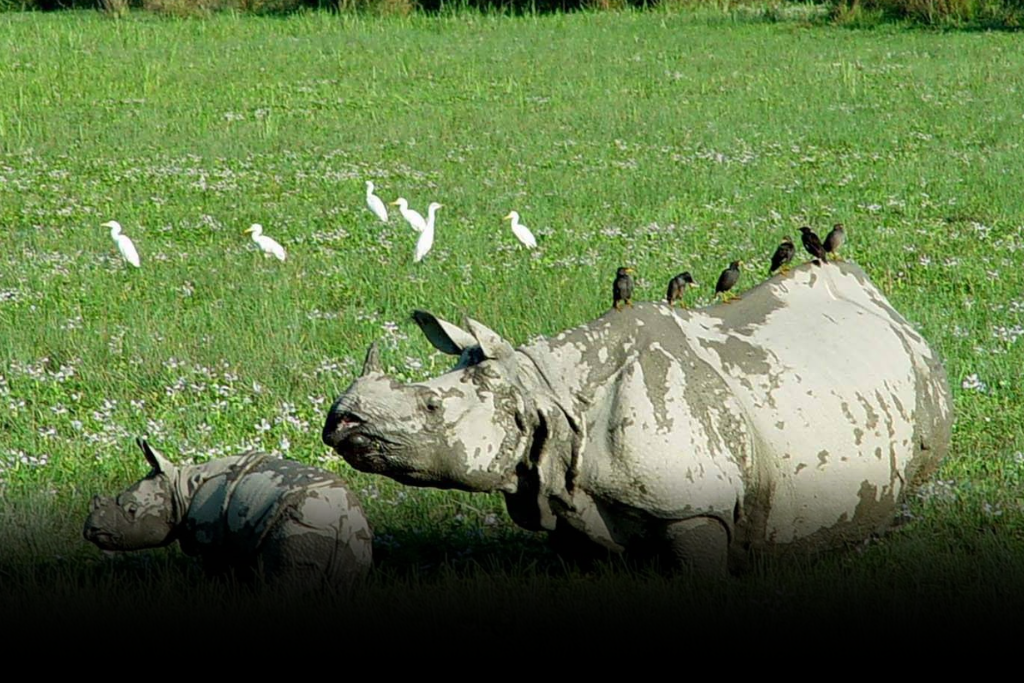Assam, nestled in the northeastern part of India, is a biodiversity hotspot, boasting a rich tapestry of flora and fauna. The state takes pride in its commitment to conservation, evident in the establishment of several Wildlife Sanctuaries of Assam. In this article, we delve into the enchanting world of Assam’s 17 wildlife sanctuaries, each a unique haven for diverse species.
Garampani Wildlife Sanctuary
Garampani Wildlife Sanctuary, nestled in the verdant hills of Karbi Anglong district in Assam, holds the distinction of being one of the state’s oldest protected areas. Spread across approximately 6 square kilometers, it is a treasure trove of biodiversity, blending semi-evergreen forests, lush grasslands, and gently rolling hills. The sanctuary is named after its famous natural hot springs — “Garam Pani” — which not only add a unique charm but are also believed to possess medicinal and therapeutic properties that attract visitors year-round.
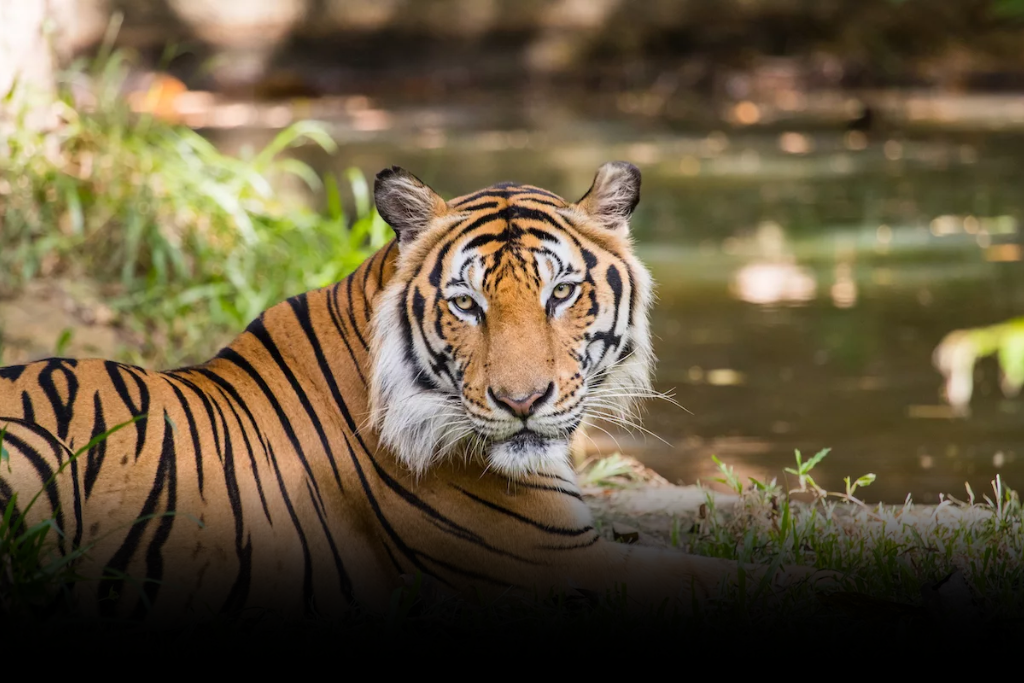
The sanctuary is a thriving habitat for a remarkable variety of flora and fauna. It shelters hoolock gibbons, Assam’s only ape species, along with leopards, jungle cats, barking deer, and a diverse range of reptiles and amphibians. Bird lovers will find it a paradise, as the area is home to several rare and migratory species, filling the forest canopy with a constant symphony of calls. Seasonal wildflowers, moss-covered rocks, and cascading streams create a picturesque setting for nature photography, trekking, and eco-tourism.
Easily accessible from both Diphu and Golaghat, Garampani Wildlife Sanctuary offers a compact yet rich wilderness experience, perfect for travelers who wish to immerse themselves in Assam’s natural beauty and heritage without venturing too far into remote terrains.
Laokhowa Wildlife Sanctuary
Laokhowa Wildlife Sanctuary, located in the Nagaon district of Assam, is a vital part of the state’s network of Wildlife Sanctuaries, spread over an area of approximately 70 square kilometers. The sanctuary forms an essential component of the Kaziranga-Orang Riverine Ecosystem, lying along the southern bank of the mighty Brahmaputra River. This strategic location provides a rich and dynamic habitat, supporting diverse flora and fauna, and serves as a crucial corridor for wildlife movement between other protected areas in Assam.
Famed for its once-thriving population of the Great Indian One-Horned Rhinoceros, Laokhowa has been undergoing active conservation and habitat restoration to revive its rhino population and protect other endangered species. Its floodplain grasslands, wetlands, and woodlands support a diverse range of fauna including wild buffaloes, hog deer, fishing cats, and Indian leopards. The sanctuary is also a paradise for birdwatchers, hosting over 200 species of resident and migratory birds, such as the Bengal florican, white-eyed pochard, and various species of storks and herons.
The seasonal floods of the Brahmaputra bring in nutrient-rich silt, nurturing the vegetation and sustaining the intricate food chain. Visitors can experience the sanctuary’s beauty through jeep safaris, guided walks, and birding tours, especially during the winter months when migratory birds arrive in large numbers.
Easily accessible from Nagaon town and well-connected to nearby Wildlife Sanctuaries like Burachapori Wildlife Sanctuary, Laokhowa offers visitors a chance to experience Assam’s rich wetland biodiversity while learning about ongoing conservation initiatives in the Brahmaputra basin.
Bornadi Wildlife Sanctuary
Bornadi Wildlife Sanctuary, located in the Baksa district of Assam along the foothills of the Eastern Himalayas, is a compact yet ecologically significant member of Assam’s network of Wildlife Sanctuaries, covering around 26 square kilometers. Established primarily for the conservation of the Hispid Hare and the Pigmy Hog—two of the world’s rarest and most endangered mammals—this sanctuary holds a unique place in Assam’s wildlife heritage. Its diverse habitats, ranging from grasslands to riverine forests, also support a variety of bird species, reptiles, and other mammals, making it a vital refuge for biodiversity in the region.
The sanctuary derives its name from the Bornadi River, which flows along its boundary, providing life-sustaining water to the lush grasslands, swampy patches, and mixed forests. Its terrain, a blend of lowland plains and gentle hill slopes, creates a diverse habitat that supports a variety of species including elephants, leopards, golden langurs, sambars, barking deer, and various reptiles. Bird enthusiasts will find Bornadi equally fascinating, as it is home to species like the white-winged wood duck, swamp francolin, and emerald dove.
Being close to the Indo-Bhutan border, Bornadi is part of a larger transboundary ecosystem, allowing seasonal wildlife movement and genetic exchange between species. The sanctuary experiences a pleasant climate during winter, making November to March the best time for nature walks, birdwatching, and photography.
Its small size makes Bornadi easy to explore in a day, but its conservation importance is immense, particularly as a stronghold for rare grassland species. With active community participation and eco-tourism initiatives, Bornadi Wildlife Sanctuary continues to play a vital role in safeguarding Assam’s fragile biodiversity.
Chakrasila Wildlife Sanctuary
Chakrasila Wildlife Sanctuary, located in the Dhubri and Kokrajhar districts of Assam, is part of the state’s diverse network of Wildlife Sanctuaries and spans over 45.5 square kilometers. Declared a sanctuary in 1994, it holds the special distinction of being India’s second protected habitat for the Golden Langur (Trachypithecus geei), a rare and endangered primate found only in parts of Assam and Bhutan. This unique status makes Chakrasila not only a biodiversity-rich haven but also an important center for primate conservation, contributing significantly to Assam’s ecological heritage.
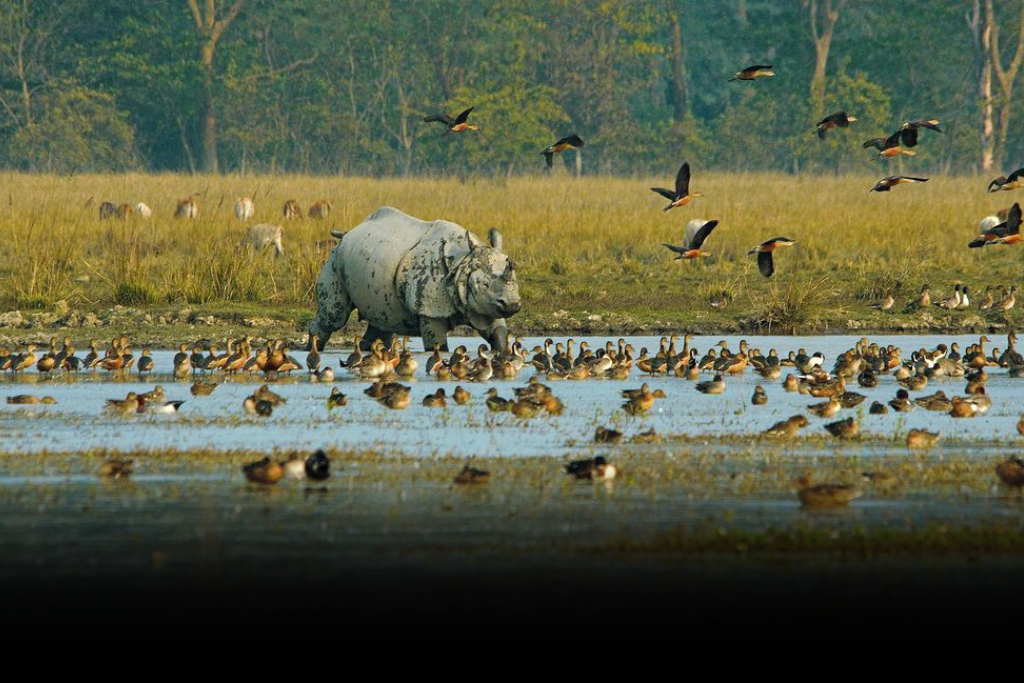
The sanctuary’s landscape is a picturesque mix of undulating hills, dense sal forests, grasslands, and small water bodies. These varied habitats support a wide range of wildlife including leopards, porcupines, barking deer, civets, hornbills, and myriad butterflies. The lakes within the sanctuary—Dheer Beel and Diplai Beel—are important wetlands that attract large flocks of migratory and resident birds such as lesser whistling ducks, openbill storks, and cormorants, making the area a paradise for birdwatchers.
Culturally, Chakrasila is closely connected with the Bodo community, whose traditional conservation practices and beliefs have played a key role in protecting its forests. The sanctuary is also rich in medicinal plants, orchids, and other native flora that add to its ecological importance.
The best time to visit Chakrasila is between November and April, when the weather is pleasant, wildlife sightings are frequent, and the wetlands teem with birdlife. Efforts by the forest department and local communities to promote eco-tourism ensure that visitors can enjoy the beauty of Chakrasila while appreciating its role in Assam’s network of Wildlife Sanctuaries without harming its delicate ecosystems.
Burachapori Wildlife Sanctuary
Burachapori Wildlife Sanctuary, located on the southern bank of the Brahmaputra River in Sonitpur district, Assam, is part of the state’s interconnected network of Wildlife Sanctuaries and covers an area of around 44 square kilometers. It forms an important part of the Kaziranga–Orang–Burachapori–Laokhowa landscape, serving as a crucial wildlife corridor for large mammals and migratory species, thereby playing a vital role in maintaining Assam’s ecological balance.
This sanctuary boasts alluvial grasslands, wetlands, and semi-evergreen forests, creating a rich habitat for diverse flora and fauna. It is home to notable species such as the Indian one-horned rhinoceros, wild buffalo, tigers, leopards, hog deer, and wild boars. The wetlands here attract a remarkable variety of migratory birds including bar-headed geese, lesser adjutant storks, and white-eyed pochards, making it an ornithologist’s delight.
Burachapori also supports several reptiles and amphibians, including Indian pythons and monitor lizards, alongside a vibrant population of butterflies and dragonflies. The sanctuary’s location within the floodplains of the Brahmaputra ensures nutrient-rich soils, leading to lush vegetation that sustains its wildlife year-round.
Once a game reserve during the colonial period, Burachapori has transformed into a vital conservation site, now actively protected by the Assam Forest Department. Local communities, especially those living in fringe villages, participate in eco-tourism initiatives and awareness programs that help in reducing human–wildlife conflict and poaching threats.
The best visiting season is November to March, when the migratory birds arrive and the grasslands are green, offering spectacular views of both wildlife and the surrounding natural beauty that make the Wildlife Sanctuaries of Assam truly remarkable.
Panidehing Wildlife Sanctuary
Panidehing Wildlife Sanctuary, located in the Sivasagar district of Assam, is a sprawling wetland ecosystem covering around 33.93 square kilometers. This sanctuary is one of Assam’s most significant birding sites, recognized as an Important Bird Area (IBA) by BirdLife International due to its high avian diversity and seasonal congregation of migratory species.
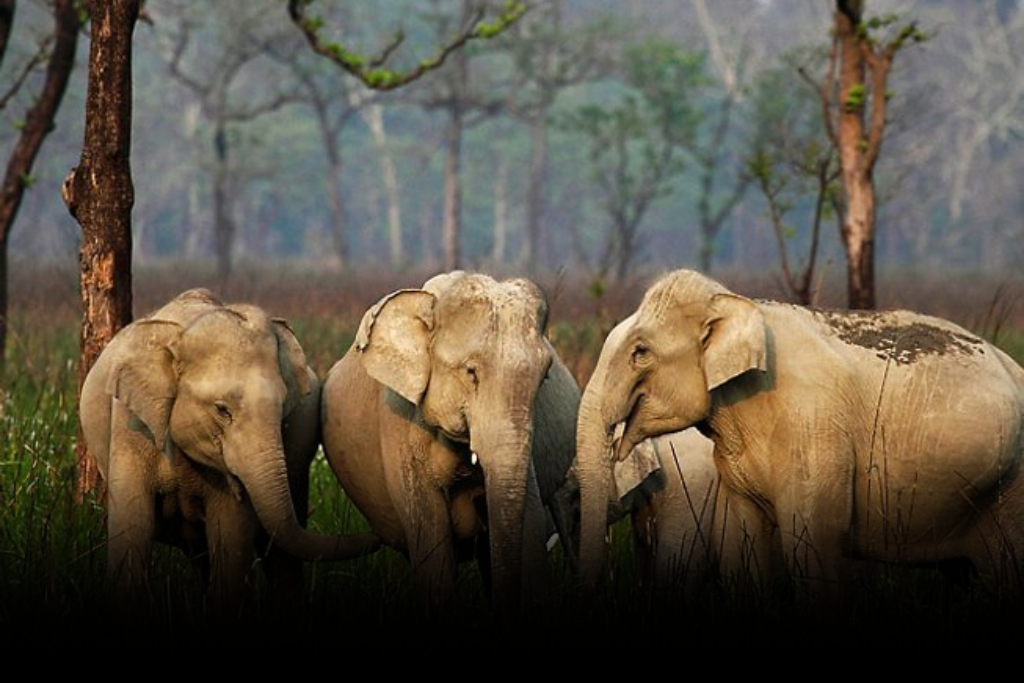
The sanctuary comprises floodplain wetlands, grasslands, and riverine forests, nourished by the waters of the Brahmaputra River and its tributaries, particularly the Disang River. Panidehing is home to more than 250 species of birds, including iconic migratory visitors such as the bar-headed goose, greylag goose, ferruginous pochard, and the rare spot-billed pelican. In the winter season, large flocks of ducks, geese, and waders transform the wetlands into a vibrant paradise for birdwatchers.
Apart from its avian wealth, Panidehing supports a range of mammals, including the Indian otter, hog deer, wild boar, and occasional sightings of gangetic river dolphins in nearby waters. The sanctuary’s grasslands and water channels also shelter several reptile species, including water monitors and turtles.
Historically, Panidehing was a floodplain grazing land, but in 1996 it was officially declared a sanctuary to safeguard its fragile ecosystem and protect migratory bird populations from hunting. Today, dedicated conservation initiatives include wetland restoration, anti-poaching drives, and community-led eco-tourism programs that promote both wildlife protection and sustainable livelihoods.
The best time to visit is November to February, when migratory birds are present in large numbers, and the landscape is lush and scenic. Photographers, ornithologists, and nature enthusiasts find this period ideal for observing the unmatched biodiversity found in Assam’s Wildlife Sanctuaries.
Hollongapar Wildlife Sanctuary
Hollongapar Wildlife Sanctuary, earlier known as Gibbon Wildlife Sanctuary, is a small yet ecologically rich protected area located in the Jorhat district of Assam. Spread over an area of about 20.98 square kilometers, this sanctuary is world-famous as the only protected habitat of India’s Western Hoolock Gibbon—the only species of ape found in the country.
The sanctuary derives its name from the Hollong tree (Dipterocarpus macrocarpus), Assam’s state tree, which dominates the forest canopy. This evergreen forest is a lush green haven, teeming with diverse wildlife. Apart from the Western Hoolock Gibbon, Hollongapar is home to stump-tailed macaques, northern pig-tailed macaques, capped langurs, Assamese macaques, and the elusive slow loris, making it an important primate conservation site in the Northeast.
The undergrowth is dense, interspersed with canes, bamboos, and shrubs, creating ideal habitats for mammals such as the leopard, jungle cat, civets, squirrels, and several species of deer. More than 200 species of birds have been recorded here, along with a variety of butterflies, reptiles, and amphibians.
The sanctuary is a remnant forest patch surrounded by tea gardens and villages, which has made it an isolated biodiversity hotspot. This geographic isolation has increased the importance of conservation programs, including habitat enrichment, corridor connectivity projects, and anti-poaching patrols.
Declared a sanctuary in 1997, Hollongapar is also a center for eco-tourism and environmental education. Visitors can explore its network of nature trails to observe gibbons swinging gracefully from tree to tree, especially in the early morning hours when their distinct calls echo through the forest.
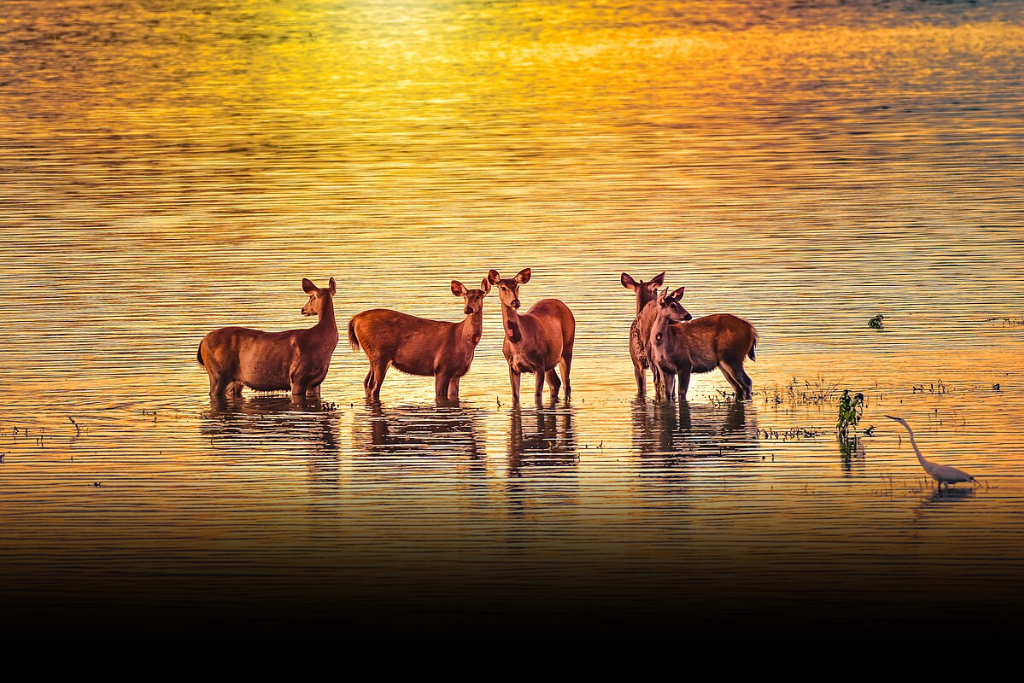
The best time to visit is from October to April, when the weather is pleasant, the forests are lush, and wildlife sightings are more frequent. Its unique primate population and scenic greenery make Hollongapar not just a wildlife haven but also one of the most treasured Wildlife Sanctuaries of Assam and a valuable natural heritage site.
Pabitora Wildlife Sanctuary
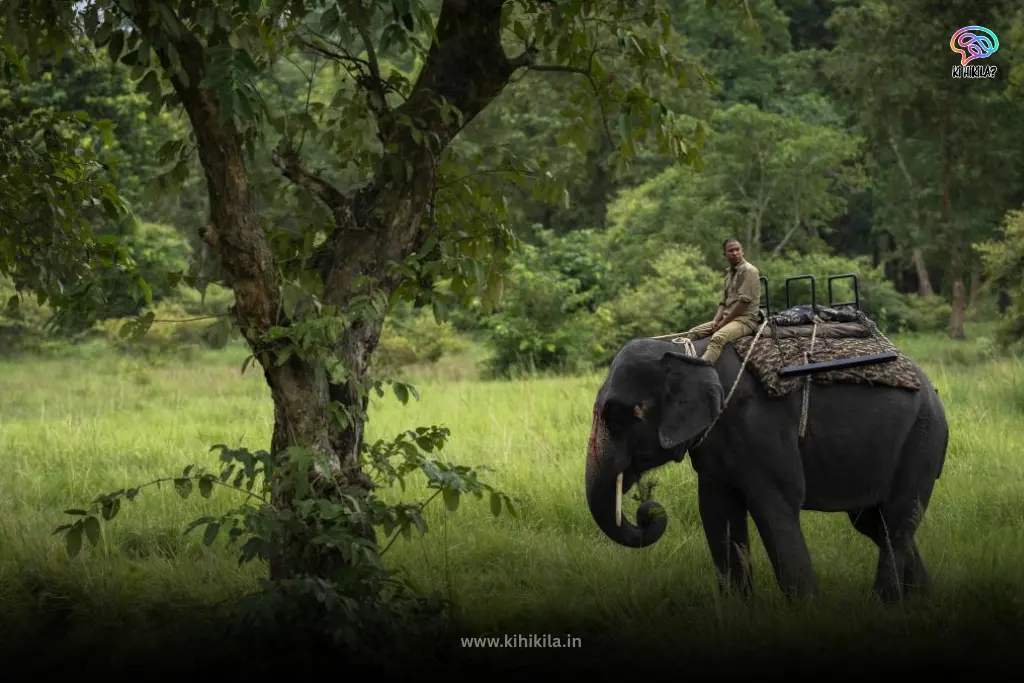
Pabitora Wildlife Sanctuary, located in the Morigaon district of Assam, is often referred to as the “Bharatpur of the East” due to its incredible bird diversity. Covering an area of about 38.8 square kilometers, Pabitora is world-renowned for its highest density of the Indian one-horned rhinoceros in the world. Despite its relatively small size, the sanctuary supports a significant population of these majestic creatures, making it one of the most important rhino conservation sites in India.
The sanctuary’s landscape is a picturesque blend of floodplains, wetlands, grasslands, and semi-evergreen forests. These diverse habitats sustain a wide variety of fauna including wild boars, leopards, feral buffaloes, barking deer, wild cats, and jackals. Pabitora is also a paradise for birdwatchers, with over 200 species of resident and migratory birds recorded, including the greater adjutant stork, Pallas’s fish eagle, swamp francolin, and numerous species of ducks, geese, and waders.
Located just about 50 km from Guwahati, Pabitora is part of the greater Kaziranga–Orang–Pabitora rhino conservation landscape. The sanctuary plays a vital role in the long-term survival of the one-horned rhino by providing a safe breeding ground. However, being in the floodplains of the Brahmaputra River, it is prone to annual floods, which both enrich the soil and occasionally force animals to higher grounds.
Declared a wildlife sanctuary in 1971, Pabitora is also deeply rooted in Assamese folklore and local culture. The surrounding villages actively participate in conservation initiatives, reflecting the harmony between humans and wildlife.
The best time to visit is from November to March, when migratory birds flock to its wetlands, rhinos are easily spotted grazing in the open grasslands, and the weather remains cool and pleasant. A visit to Pabitora offers an immersive experience of Assam’s natural beauty and showcases why it is among the most remarkable Wildlife Sanctuaries of Assam and a true gem in the region.
Sonai Rupai Wildlife Sanctuary
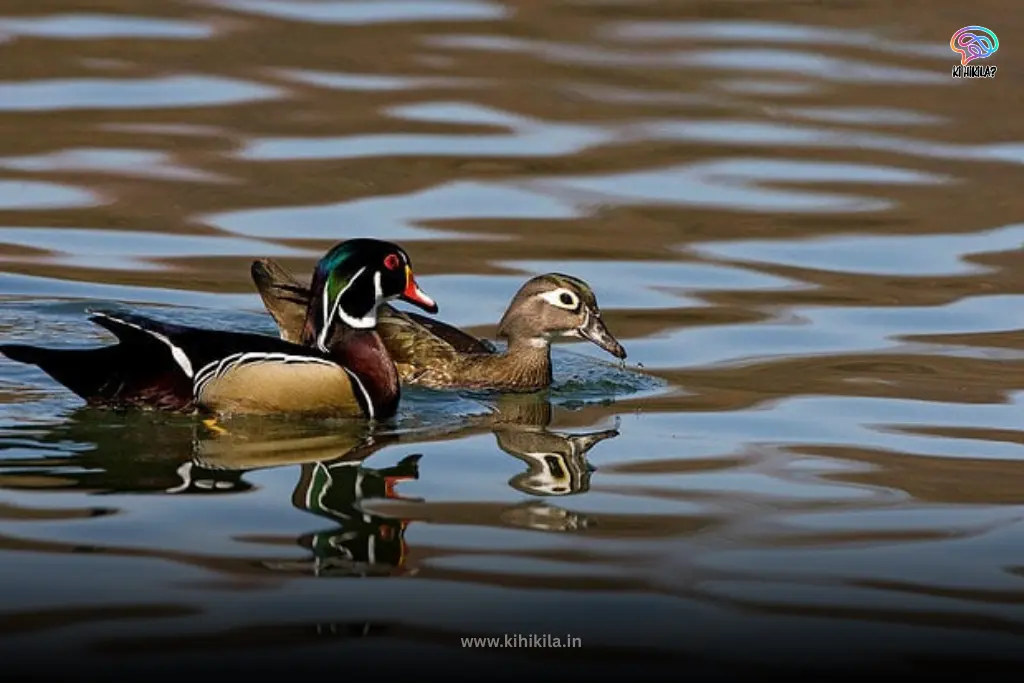
Sonai Rupai Wildlife Sanctuary, located in the northern foothills of the Himalayas in Assam’s Sonitpur district, is a stunning expanse of wilderness covering approximately 220 square kilometers. Situated along the banks of the Jia Bhoroli River and bordered by the scenic hills of Arunachal Pradesh, the sanctuary offers a breathtaking blend of dense forests, lush grasslands, and rich riverine ecosystems. Its diverse landscapes make it a haven for wildlife enthusiasts, birdwatchers, and nature lovers seeking to experience one of Assam’s most pristine Wildlife Sanctuaries.
This sanctuary is home to a rich variety of wildlife, including tigers, elephants, Indian one-horned rhinoceroses, gaurs (Indian bison), swamp deer, and hog deer. Smaller species such as the leopard cat, civet, Himalayan black bear, and various reptiles also thrive here. The sanctuary is especially known for being part of the elephant corridor in Assam, which allows herds to move freely between forest ranges.
Sonai Rupai is also an ornithologist’s paradise, hosting over 150 species of birds, both resident and migratory. Species like the white-winged wood duck, hornbills, woodpeckers, and different varieties of eagles can be spotted here. Its wetlands and riverine areas attract waterfowl during the winter, enhancing its avian diversity.
The flora of Sonai Rupai is equally rich, with tropical semi-evergreen forests, moist deciduous patches, grasslands, and bamboo groves dominating the terrain. These habitats are critical for supporting the sanctuary’s large mammals and birdlife.
Declared a wildlife sanctuary in 1998, Sonai Rupai is not just a biodiversity hotspot but also an area of cultural significance, with several indigenous communities living in nearby villages who share a deep connection with the forest.
The best time to visit Sonai Rupai Wildlife Sanctuary is between November and April, when the weather is pleasant, visibility is high, and wildlife sightings are more frequent. Among Assam’s notable Wildlife Sanctuaries, it offers a raw, untouched wilderness experience—perfect for those seeking both adventure and tranquility amidst the state’s rich natural heritage.
Bherjan – Borajan – Padumoni Wildlife Sanctuary
Bherjan-Borajan-Padumoni Wildlife Sanctuary, located in Assam’s Tinsukia district, is a unique protected area comprising three distinct forest patches – Bherjan, Borajan, and Padumoni – spread across approximately 7.22 square kilometers. Despite its small size, it holds significant ecological value, serving as a vital habitat for Assam’s endangered primates, rare bird species, and other wildlife, making it one of the important Wildlife Sanctuaries in the region.
These forest fragments are rich in semi-evergreen and moist deciduous vegetation, providing a safe habitat for several rare and threatened species. The sanctuary is especially known for its primates, including the Hoolock gibbon (India’s only ape), capped langur, pig-tailed macaque, rhesus macaque, and slow loris. It also harbors other mammals like civets, leopard cats, and jungle cats.
Birdwatchers will find the sanctuary a delight, as it is home to over 200 species of birds, such as hornbills, woodpeckers, barbets, drongos, and a variety of migratory birds during winter. The dense canopy and quiet environment make it an ideal spot for spotting elusive species.
The flora of the sanctuary includes bamboo groves, tall hardwood trees, fruit-bearing plants, and shrubs, which not only support the animal life but also help maintain ecological balance in the surrounding region.
Bherjan-Borajan-Padumoni was officially declared a wildlife sanctuary in 1999 with the primary aim of protecting the fragmented yet biologically rich habitats of Assam’s eastern region. It is also significant for the local communities who depend on its ecosystem services while participating in its conservation efforts.
The best time to visit Bherjan-Borajan-Padumoni Wildlife Sanctuary is between November and March, when the weather is cool and sightings of both primates and migratory birds are frequent. Though smaller in size compared to other Wildlife Sanctuaries in Assam, it plays an immensely important role in preserving the state’s unique and fragile biodiversity.
East K. Anglong Wildlife Sanctuary
East Karbi Anglong Wildlife Sanctuary, located in the Karbi Anglong district of Assam, is one of the most scenic and ecologically important Wildlife Sanctuaries in the state. Spread across an area of approximately 221.81 square kilometers, the sanctuary forms an important part of the Kaziranga–Karbi Anglong landscape, acting as a critical buffer zone for the world-famous Kaziranga National Park.
This sanctuary is a biodiversity hotspot, home to rich tropical evergreen and semi-evergreen forests, along with patches of moist deciduous vegetation. The lush habitat supports a wide variety of wildlife, including elephants, tigers, leopards, clouded leopards, gaurs (Indian bison), wild dogs (dholes), sambar deer, barking deer, and wild boars. The sanctuary also has a healthy population of primates such as the capped langur, stump-tailed macaque, and hoolock gibbon.
Birdlife in East Karbi Anglong is equally fascinating, with species like great hornbills, wreathed hornbills, grey-headed fish eagles, hill mynas, and a variety of migratory waterfowl adding color and vibrance to the forest canopy. The sanctuary is also known for its abundance of reptiles, butterflies, and amphibians.
The hilly terrain, interspersed with streams, waterfalls, and dense bamboo groves, creates a breathtaking landscape that not only supports wildlife but also regulates the region’s microclimate. The sanctuary plays a crucial role in watershed management and in preventing soil erosion in the surrounding hills.
Declared a wildlife sanctuary in 2000, East Karbi Anglong is also a vital elephant corridor, ensuring the free movement of herds between Assam and neighboring states. Conservation efforts here focus on protecting habitats from deforestation, poaching, and human-wildlife conflict.
The best time to visit is from November to April, when the climate is pleasant, the forest is lush, and wildlife sightings are more frequent. For nature lovers and photographers, East Karbi Anglong stands out among Assam’s Wildlife Sanctuaries, offering an unspoiled wilderness that reflects the true beauty of the state’s hill forests.
Nambor Wildlife Sanctuary
Nambor Wildlife Sanctuary, located in the Golaghat district of Assam, is a picturesque haven of biodiversity spread over an area of 37 square kilometers. Despite its relatively smaller size compared to other Wildlife Sanctuaries in Assam, Nambor is exceptionally rich in flora and fauna, making it an important part of the Kaziranga–Karbi Anglong Elephant Reserve. The sanctuary is connected to Garampani Wildlife Sanctuary and Nambor-Doigrung Wildlife Sanctuary, forming a contiguous green belt crucial for wildlife migration and genetic diversity.
The forest here is predominantly tropical semi-evergreen and moist deciduous, interspersed with patches of bamboo, cane brakes, and tall grasses. It provides shelter to a diverse range of wildlife including elephants, leopards, sloth bears, hoolock gibbons, rhesus macaques, capped langurs, wild boars, sambar deer, and barking deer. Nambor is also a safe refuge for smaller yet significant species like the civet cat, pangolin, and porcupine.
One of Nambor’s most enchanting aspects is its birdlife. The sanctuary is home to over 220 species of birds, including great hornbills, pied hornbills, racket-tailed drongos, red junglefowls, and a variety of kingfishers. During winter, several migratory species also make Nambor their seasonal home, adding vibrancy to its already rich ecosystem.
Apart from its wildlife, Nambor’s landscape features gentle hills, perennial streams, small lakes, and dense forest canopies that create a serene atmosphere. These wetlands and water bodies not only serve as critical water sources for animals but also help maintain the ecological balance of the region.
Nambor Wildlife Sanctuary was officially declared a protected area in 2003 with the primary objective of conserving its delicate ecosystem and ensuring the safe passage of elephants between the hilly forests of Karbi Anglong and the floodplains of Kaziranga.
The best time to visit is from November to April, when the forest is alive with bird calls, the weather is pleasant, and wildlife is more visible. Nambor’s close proximity to Kaziranga also makes it a rewarding extension for travelers seeking to experience the lesser-known Wildlife Sanctuaries of Assam.
Marat Longri Wildlife Sanctuary
Marat Longri Wildlife Sanctuary, situated in the Karbi Anglong district of Assam, covers an expansive 451 square kilometers, making it one of the larger Wildlife Sanctuaries in the region. This sanctuary plays a critical role in the ecological network of Assam, acting as an important corridor for wildlife movement between Kaziranga National Park, Nambor Wildlife Sanctuary, and Dhansiri-Lumding Wildlife Sanctuary. It is part of the Kaziranga–Karbi Anglong Elephant Reserve, serving as a lifeline for large mammals, particularly the endangered Asian elephant.
The sanctuary’s terrain is a mix of undulating hills, deep valleys, and lush green forests, dominated by tropical semi-evergreen and moist deciduous vegetation. Towering trees such as hollong, nahor, ajhar, and simul form dense canopies that provide shelter to numerous wildlife species. Rich in biodiversity, Marat Longri is home to tigers, leopards, wild dogs (dholes), sloth bears, sambar deer, barking deer, gaur, and civets. It also supports a significant population of primates, including the rare stump-tailed macaque, capped langur, and hoolock gibbon.
Birdwatchers find Marat Longri to be a treasure trove, with a variety of avian species including hornbills, barbets, woodpeckers, minivets, and drongos. The sanctuary also provides refuge to several migratory birds during the winter months, adding to its ecological charm.
The rivers Jamuna and Nambor flow through the sanctuary, nourishing its forests and sustaining its wildlife. These water sources are vital for the survival of elephants, deer, and smaller animals, especially during dry spells. The presence of wetlands and perennial streams further enhances the sanctuary’s ecological balance.
Declared a wildlife sanctuary in 2003, Marat Longri was established to curb deforestation, poaching, and habitat fragmentation in the Karbi Anglong region. However, it still faces conservation challenges, including human-wildlife conflict and illegal encroachment, which are actively being addressed by forest authorities and local communities.
The ideal time to visit is between November and March, when the weather is pleasant and animal sightings are more frequent. With its untouched wilderness, vast landscapes, and crucial role in wildlife conservation, Marat Longri stands as one of Assam’s most significant yet lesser-known Wildlife Sanctuaries, deserving more attention from nature enthusiasts and conservationists alike.
Nambor – Doigrung Wildlife Sanctuary
Nambor–Doigrung Wildlife Sanctuary, located in the Golaghat district of Assam, spans an area of about 97.15 square kilometers and is a crucial part of Assam’s interconnected Wildlife Sanctuaries and habitats. Established in 2003, this sanctuary lies close to Kaziranga National Park and the Nambor Wildlife Sanctuary, forming an important ecological corridor that supports the free movement of animals, particularly the Asiatic elephant.
The terrain here is a blend of low-lying plains, forested hills, and perennial water bodies, making it a rich and diverse ecosystem. It is predominantly covered with tropical semi-evergreen forests and moist deciduous vegetation, featuring towering hollong, nahor, and bhelu trees that provide dense canopy cover. This lush habitat is home to a wide range of wildlife including tigers, leopards, wild boars, civets, sambar deer, barking deer, and primates like the capped langur and rhesus macaque.
One of the sanctuary’s highlights is its vibrant birdlife, with sightings of hornbills, kingfishers, barbets, woodpeckers, and migratory species that arrive during the winter months. The wetlands and river systems within the sanctuary, especially the Doigrung River, are vital for maintaining its ecological balance and sustaining its diverse fauna.
Nambor–Doigrung is not just a haven for large mammals but also an important refuge for reptiles and amphibians, including several rare and endemic species. The dense vegetation and wetland zones make it an ideal breeding ground for various wildlife forms.
This sanctuary faces conservation challenges such as habitat loss due to encroachment and occasional human-wildlife conflicts, particularly with elephants. However, ongoing efforts by the forest department and local conservation groups aim to protect and restore its natural resources.
The best time to visit is from November to April, when the climate is favorable and wildlife activity is more visible. While not as famous as Kaziranga, Nambor–Doigrung Wildlife Sanctuary holds immense ecological importance, acting as a green lifeline for Assam’s wildlife and an ideal destination for nature enthusiasts seeking less-crowded wilderness experiences.
Amchang Wildlife Sanctuary
Amchang Wildlife Sanctuary, located on the eastern outskirts of Guwahati in Kamrup Metropolitan district, is one of Assam’s most accessible yet ecologically rich Wildlife Sanctuaries. Covering an area of 78.64 square kilometers, it was officially declared a protected area in 2004 to safeguard its unique biodiversity and provide a natural refuge for wildlife near the urban landscape.
The sanctuary’s terrain is a striking combination of hills, plains, and riverine ecosystems, featuring dense tropical moist deciduous forests, bamboo groves, and patches of grasslands. Amchang is home to an impressive range of flora, including valuable species like hollong, nahor, ajhar, gamari, and various medicinal plants that are vital for both ecological balance and local livelihoods.
This sanctuary serves as a critical habitat for Asiatic elephants, which often migrate between forest patches, sometimes leading to human-elephant encounters due to its proximity to Guwahati. Other notable wildlife includes leopards, Chinese pangolins, wild boars, rhesus macaques, slow lorises, capped langurs, civets, and porcupines. Amchang is also known for its rich birdlife, with sightings of great hornbills, pied hornbills, crested serpent eagles, white-throated kingfishers, and a variety of migratory birds during the winter season.
Amchang’s streams and wetlands support amphibians, reptiles, and freshwater fish, further enhancing its biodiversity value. It also plays a key role as a green lung for Guwahati city, mitigating air pollution, regulating temperature, and serving as a vital watershed for nearby water sources.
However, its proximity to urban settlements poses conservation challenges, such as encroachment, habitat fragmentation, and human-wildlife conflict. Continuous efforts are being made by the Assam Forest Department and NGOs to restore degraded areas, manage conflict situations, and raise awareness among local communities about the importance of this sanctuary.
The best time to visit Amchang Wildlife Sanctuary is between November and March, when the weather is pleasant and wildlife sightings are more frequent. Its easy accessibility from Guwahati makes it an ideal destination for day trips, wildlife photography, birdwatching, and environmental education, offering a rare blend of wilderness and urban proximity.
Borail Wildlife Sanctuary
Borail Wildlife Sanctuary, located in the Cachar and Dima Hasao districts of southern Assam, is one of the most significant biodiversity hotspots in the state and among the largest Wildlife Sanctuaries in Assam. Covering an area of approximately 326.24 square kilometers, it was officially declared a protected area in 2004 to safeguard the rich flora and fauna of the Barail mountain range, which forms part of the Indo-Burma biodiversity hotspot.
The sanctuary is characterized by its hilly terrain, deep valleys, cascading streams, and dense tropical evergreen and semi-evergreen forests. Its lush vegetation includes valuable tree species such as hollong, nahor, titachopa, gamari, teak, and several medicinal plants. These forests not only provide a vital habitat for wildlife but also act as an important catchment area for rivers like the Jatinga and Sonai, which are crucial for the region’s water supply and agriculture.
Borail Wildlife Sanctuary is home to an impressive variety of wildlife, including Hoolock gibbons (India’s only ape species), capped langurs, stump-tailed macaques, barking deer, clouded leopards, golden cats, leopard cats, and serows. It is also an important habitat for Asiatic elephants that migrate across the Barail range. The bird diversity here is remarkable, with sightings of hornbills, barbets, woodpeckers, eagles, and a wide range of songbirds. During the winter months, migratory birds visit the sanctuary, adding to its avian richness.
The sanctuary also harbors rare and endemic species of reptiles, amphibians, butterflies, and orchids, making it a paradise for researchers and nature enthusiasts. Its remote location has helped preserve its pristine condition, but it also poses challenges for accessibility and tourism development.
Apart from its ecological value, Borail Wildlife Sanctuary plays a vital role in regulating the local climate, preventing soil erosion, and supporting the livelihoods of nearby communities through eco-tourism and non-timber forest produce. However, threats like shifting cultivation, logging, and habitat disturbance still require continuous monitoring and conservation efforts.
The best time to visit Borail Wildlife Sanctuary is between November and March, when the weather is cooler, trekking is more comfortable, and wildlife sightings are more likely. Its serene atmosphere, untouched forests, and rich biodiversity make Borail a hidden gem for those seeking an authentic wilderness experience in Assam.
Deepar Beel Wildlife Sanctuary
Deepor Beel Wildlife Sanctuary, located on the south-western edge of Guwahati city in Kamrup district, is one of Assam’s most important freshwater wetland ecosystems and a notable example among its Wildlife Sanctuaries. Spread over an area of about 4.14 square kilometers and forming part of a larger wetland covering nearly 40 square kilometers, it was designated as a Ramsar Site in 2002 due to its global ecological significance. The sanctuary serves as a critical habitat for both resident and migratory birds and is recognized as an Important Bird and Biodiversity Area (IBA) by BirdLife International.
The beel (lake) is primarily a floodplain wetland, nourished by the waters of the Bharalu, Kalmoni, and Basistha rivers, and connected to the mighty Brahmaputra. Its seasonal water level fluctuations create an ideal environment for aquatic plants, fish, and waterbirds. The lush wetland vegetation includes species like water hyacinth, lotus, and various submerged plants, which sustain a rich aquatic food web.
Deepor Beel is home to over 220 bird species, including threatened species like the spot-billed pelican, greater adjutant stork, lesser adjutant stork, Baer’s pochard, and Pallas’s sea eagle. During the winter migration season, thousands of birds from Central Asia, Siberia, and other regions arrive here, turning the beel into a vibrant birdwatching destination. Common sightings include cormorants, kingfishers, egrets, herons, and numerous species of ducks and geese.
Beyond its avian diversity, the sanctuary supports rich aquatic life with over 50 species of fish, amphibians, reptiles, and small mammals. Fishing is a traditional livelihood for surrounding communities, though regulated to protect the sanctuary’s ecology.
Ecologically, Deepor Beel serves as a natural stormwater reservoir for Guwahati, helping prevent floods during heavy rains. It also plays a crucial role in groundwater recharge, climate regulation, and supporting local biodiversity.
However, this wetland faces threats from urban encroachment, pollution, and solid waste dumping, which have been matters of serious concern for conservationists. Steps have been taken by the Assam Forest Department, NGOs, and birding communities to promote awareness, sustainable tourism, and stricter protection measures.
The best time to visit Deepor Beel Wildlife Sanctuary is from November to March, when migratory birds arrive in large numbers and the weather is pleasant. Early morning and late afternoon visits offer the best birdwatching opportunities, along with stunning views of the beel under soft sunlight.
With its unique wetland charm and vital ecological role, Deepor Beel remains a jewel of Assam’s natural heritage, drawing bird lovers, photographers, and conservationists from across the globe.
Between the exploration of these sanctuaries, visitors often find themselves enchanted by the natural beauty and the coexistence of wildlife and serene landscapes. Whether it’s the trumpeting of elephants or the melodious chirping of birds, Assam’s wildlife sanctuaries offer an immersive experience for nature lovers.
FAQs
Q: What makes Deepor Beel Wildlife Sanctuary unique among Assam’s Wildlife Sanctuaries?
Deepor Beel is unique for being a Ramsar Site and an Important Bird and Biodiversity Area, supporting a rich variety of resident and migratory bird species.
Q: Can I spot the Indian one-horned rhinoceros in these sanctuaries?
Pabitora Wildlife Sanctuary is particularly famous for its high density of Indian one-horned rhinoceros. However, other sanctuaries may also have rhinoceros populations.
Q: Are there accommodation options near these sanctuaries?
Many sanctuaries have nearby accommodation options ranging from forest lodges to resorts, providing visitors with a comfortable stay amidst nature.
Q. How large is Deepor Beel Wildlife Sanctuary?
The sanctuary covers about 4.14 square kilometers, while the larger wetland ecosystem spans nearly 40 square kilometers.
Q. Which species are commonly found in Deepor Beel Wildlife Sanctuary?
It is home to numerous bird species like the Greater Adjutant Stork, Spot-billed Pelican, and various ducks, along with aquatic fauna.
Q. Why is Deepor Beel Wildlife Sanctuary important for conservation?
It plays a vital role in preserving Assam’s wetland biodiversity, providing breeding grounds for birds, and supporting ecological balance among Wildlife Sanctuaries.
Q. When is the best time to visit Deepor Beel Wildlife Sanctuary?
Winter, between November and February, is the best time to see a wide variety of migratory birds.
Q. How does Deepor Beel compare to other Wildlife Sanctuaries in Assam?
Unlike forested Wildlife Sanctuaries, Deepor Beel is a wetland sanctuary, making it a unique habitat type within the state.
Q. Is Deepor Beel Wildlife Sanctuary open to tourists year-round?
Yes, visitors can explore the sanctuary throughout the year, though winter offers the most rewarding wildlife sightings.
Q. What threats does Deepor Beel Wildlife Sanctuary face?
Urban expansion, pollution, and illegal fishing are some of the key challenges affecting this and other Wildlife Sanctuaries in Assam.


